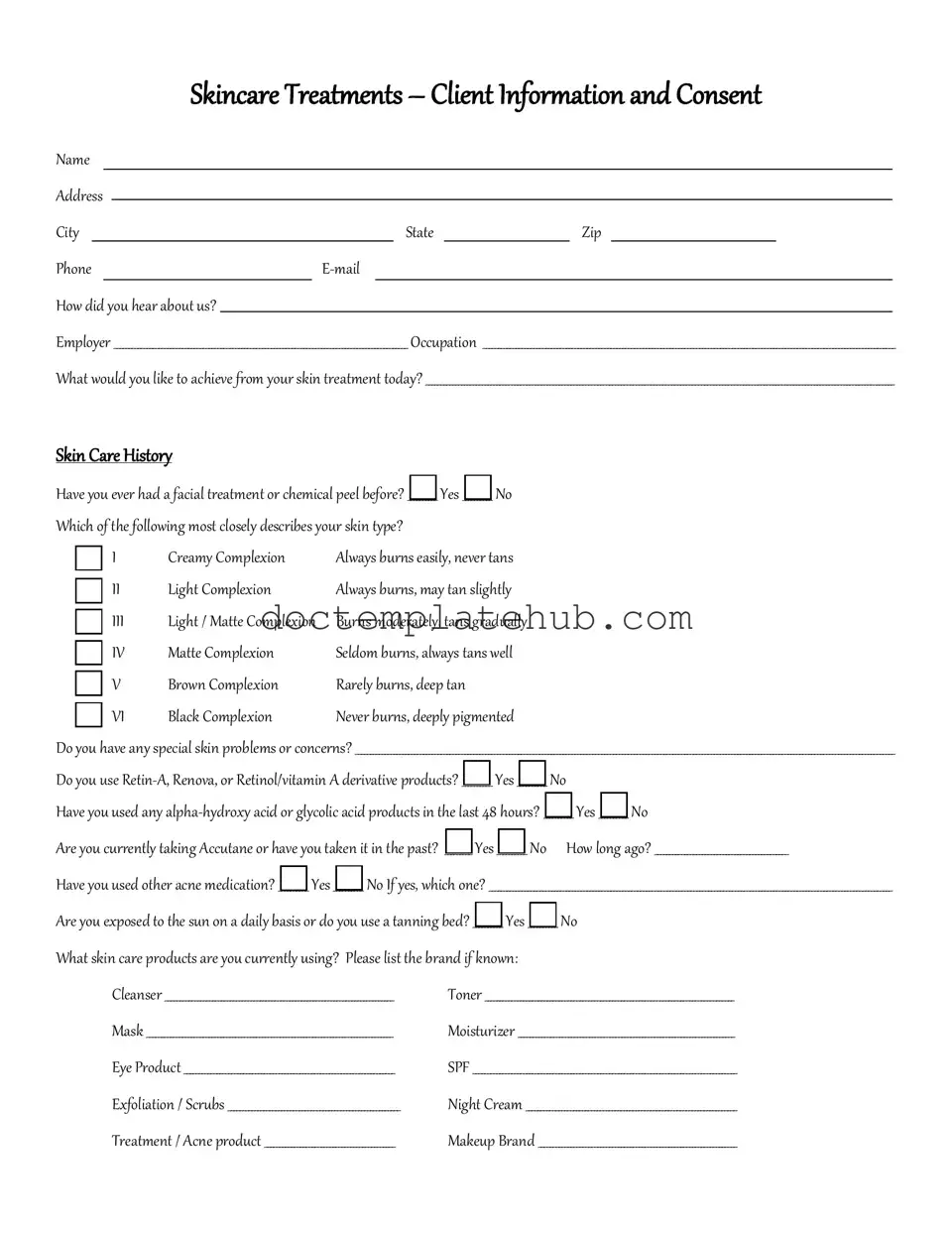What is a Facial Consent form?
A Facial Consent form is a document that clients sign before undergoing a facial treatment. It outlines the procedures involved, potential risks, and the client's rights. By signing, clients acknowledge that they understand the treatment and agree to proceed with it.
Why is it important to sign a Facial Consent form?
Signing a Facial Consent form is crucial for both the client and the service provider. It protects the provider legally by ensuring that clients are informed about the treatment. For clients, it serves as a way to communicate their understanding and acceptance of the procedures and any associated risks.
What information is typically included in a Facial Consent form?
A Facial Consent form usually includes details about the treatment, a list of potential side effects, the client's medical history, and any allergies. It may also have a section for clients to indicate their understanding of the treatment and consent to proceed.
Can I refuse to sign the Facial Consent form?
Yes, you can refuse to sign the Facial Consent form. However, without your signature, the service provider may not be able to perform the facial treatment. It is essential to discuss any concerns you have with the provider before making a decision.
What should I do if I have questions about the form?
If you have questions or concerns about the Facial Consent form, it’s important to ask the service provider for clarification. They should be able to explain any terms or sections you find confusing and provide additional information about the treatment.
Is the Facial Consent form legally binding?
Yes, a Facial Consent form is generally considered a legally binding document. By signing it, you agree to the terms outlined in the form. However, the enforceability can depend on local laws and specific circumstances surrounding the treatment.
What if I experience an adverse reaction after signing the form?
If you experience an adverse reaction after the treatment, it’s important to seek medical attention immediately. The consent form typically outlines potential risks, but it does not absolve the service provider from liability if negligence can be proven.
Can I revoke my consent after signing the form?
Yes, you can revoke your consent at any time, even after signing the form. If you feel uncomfortable or have second thoughts, communicate your decision to the service provider immediately. Your comfort and safety should always come first.
Are there age restrictions for signing a Facial Consent form?
Typically, clients must be at least 18 years old to sign a Facial Consent form independently. Minors may require a parent or guardian to sign on their behalf. It's essential to check with the service provider for their specific policies regarding age and consent.
